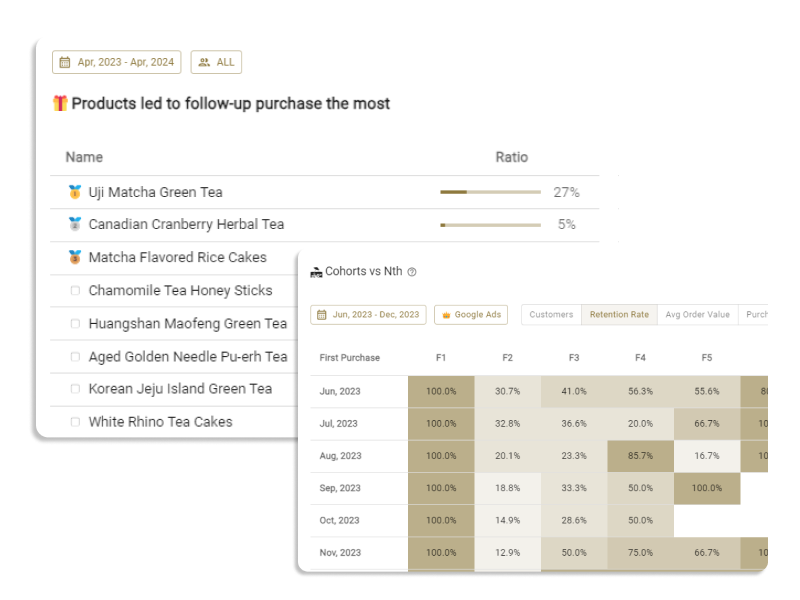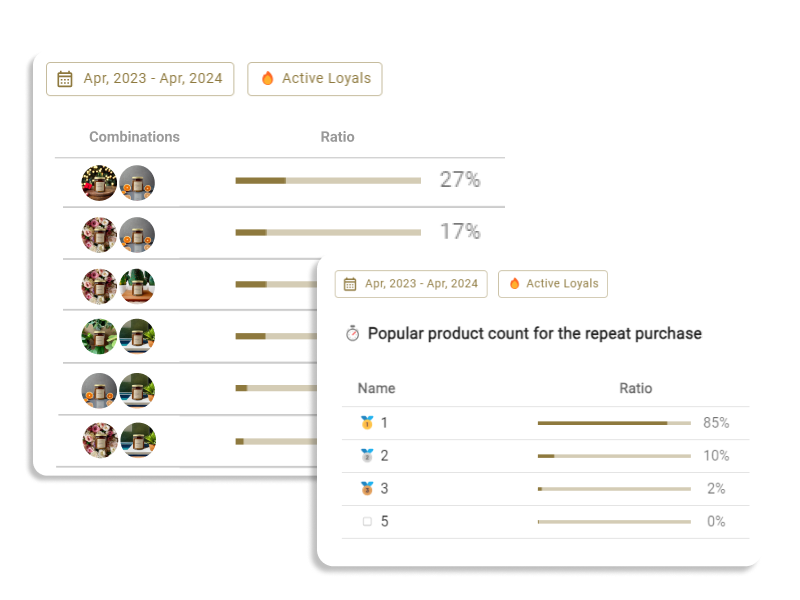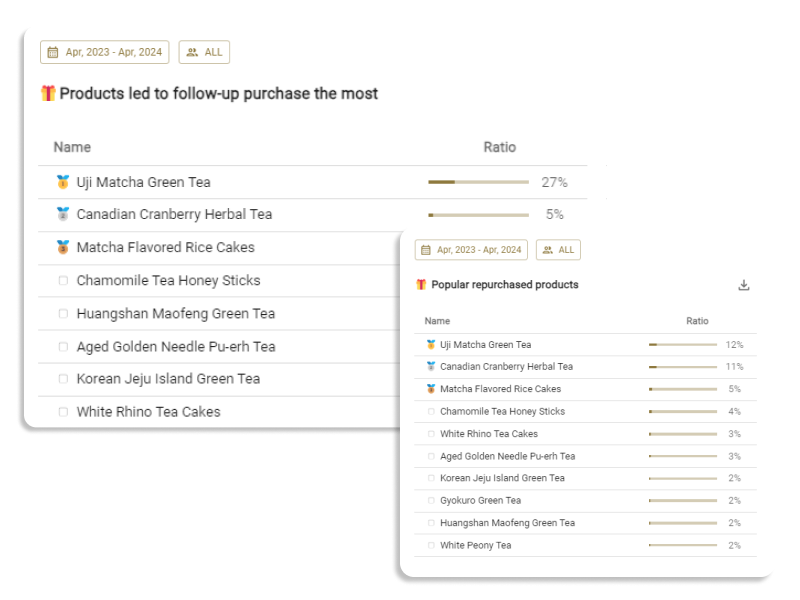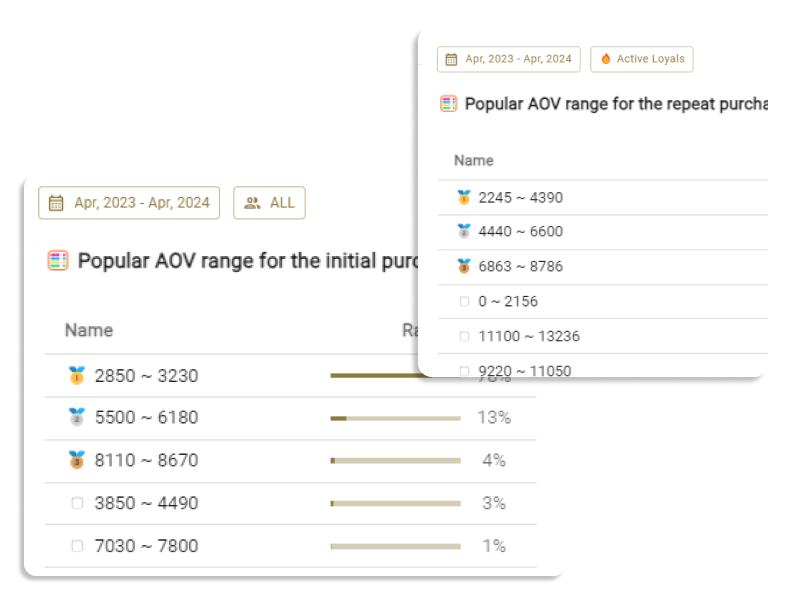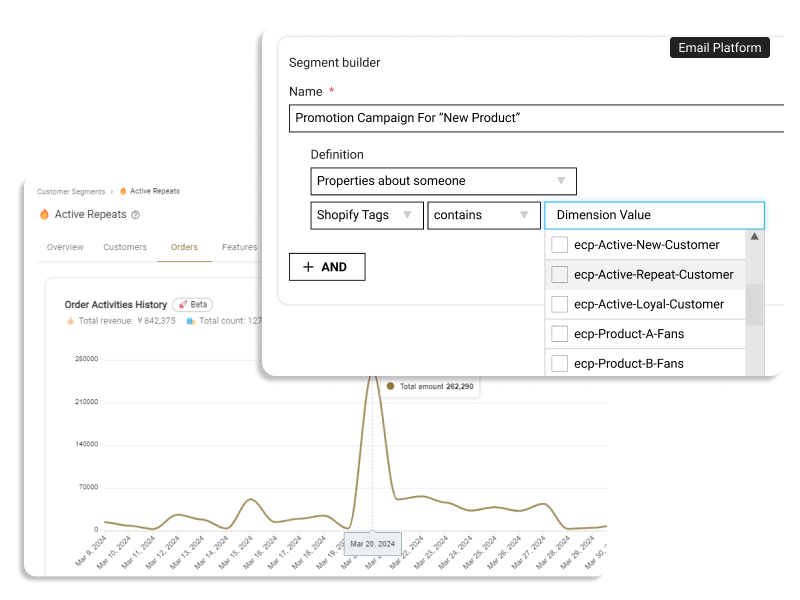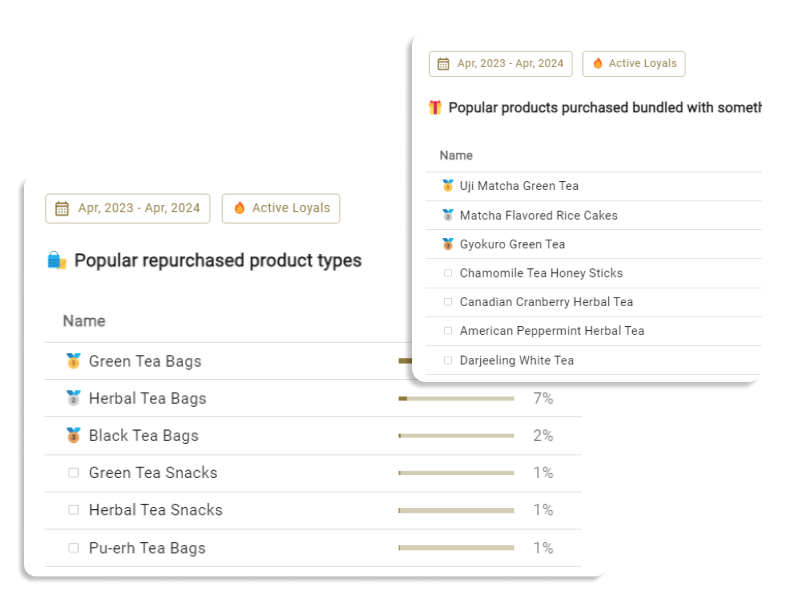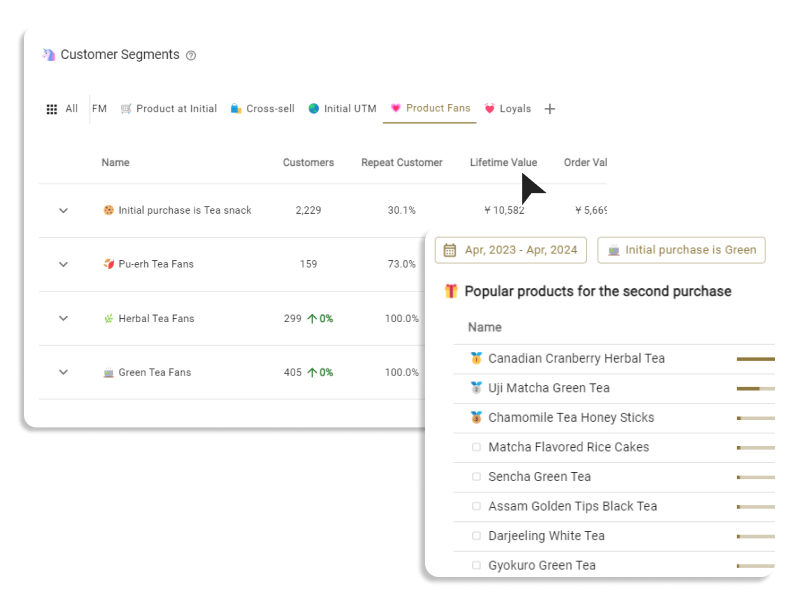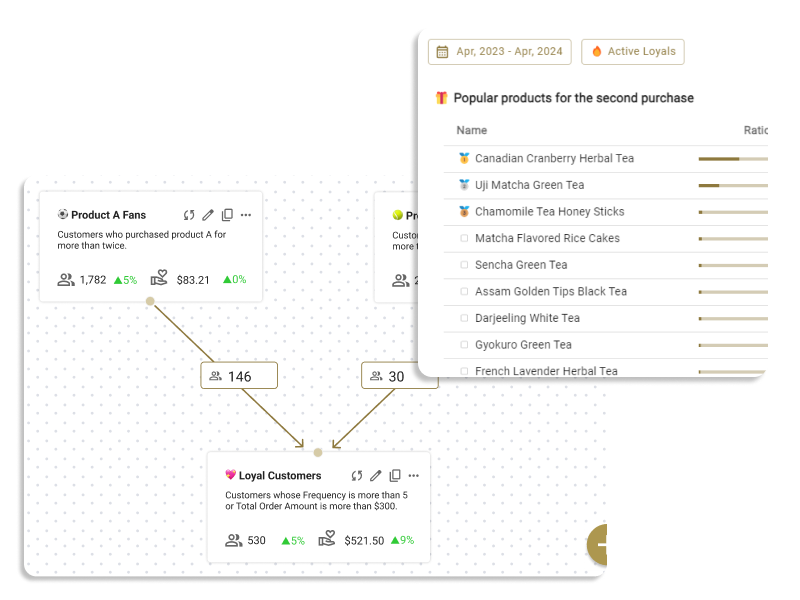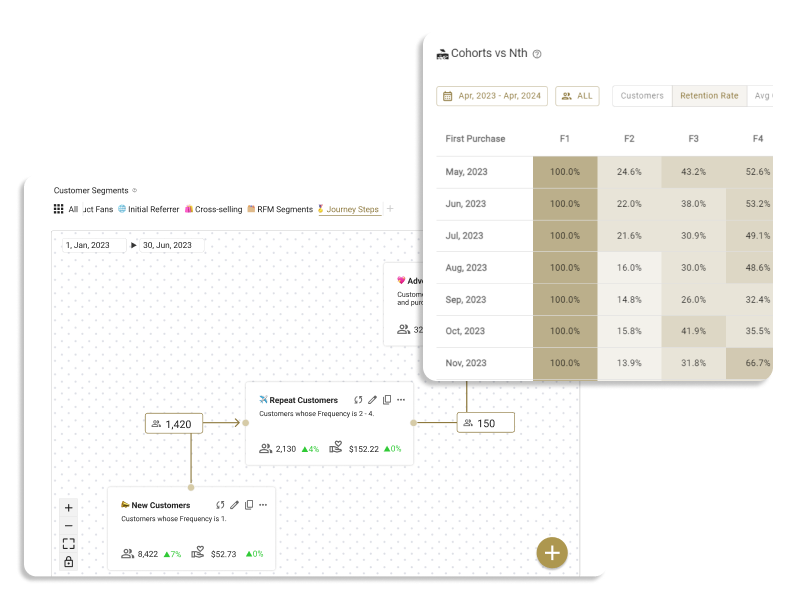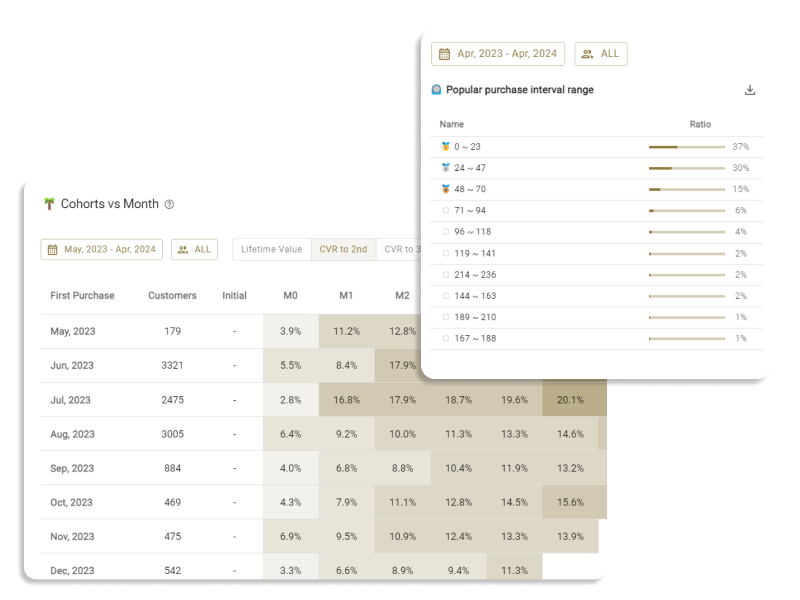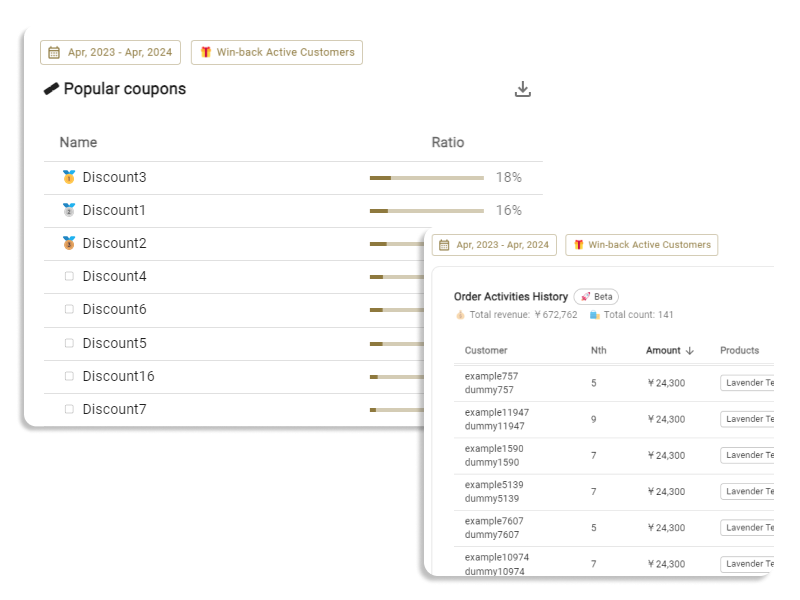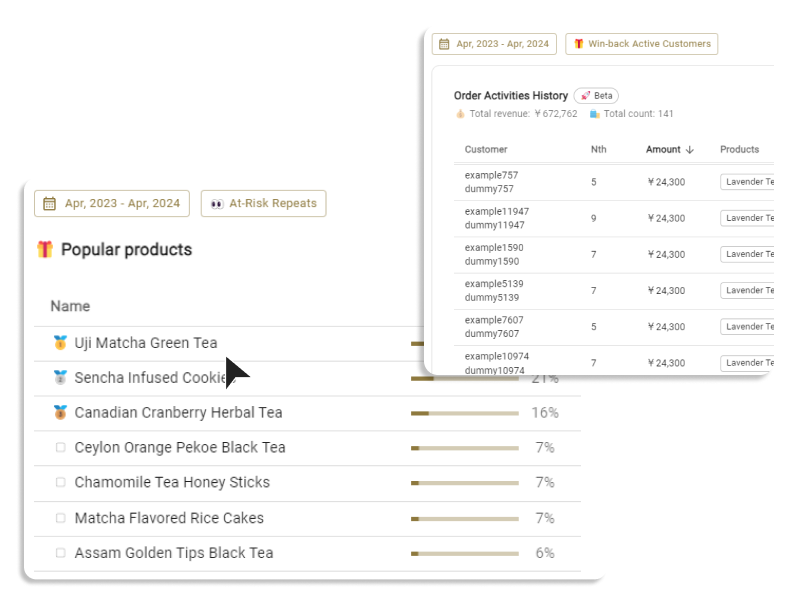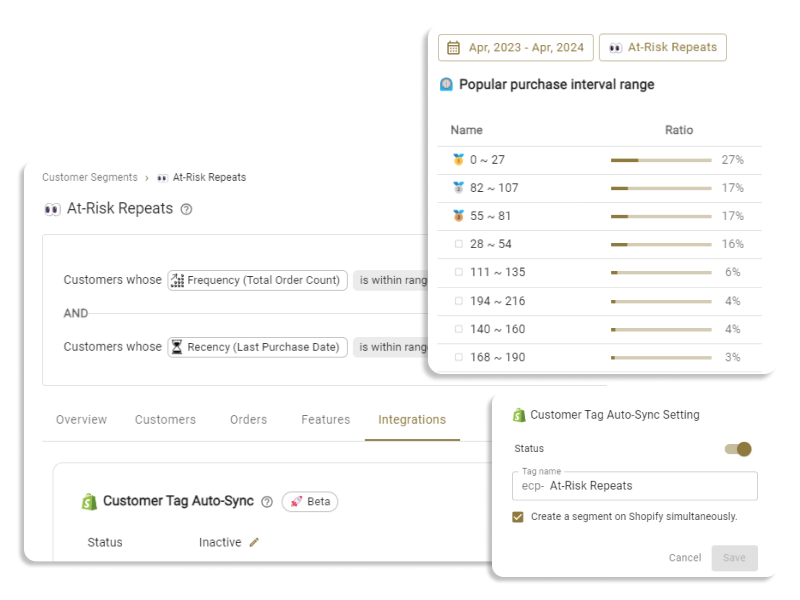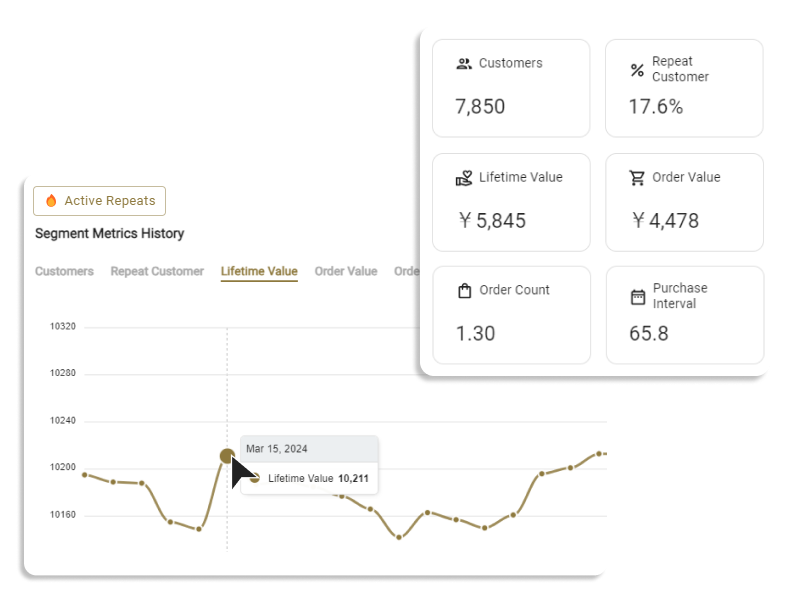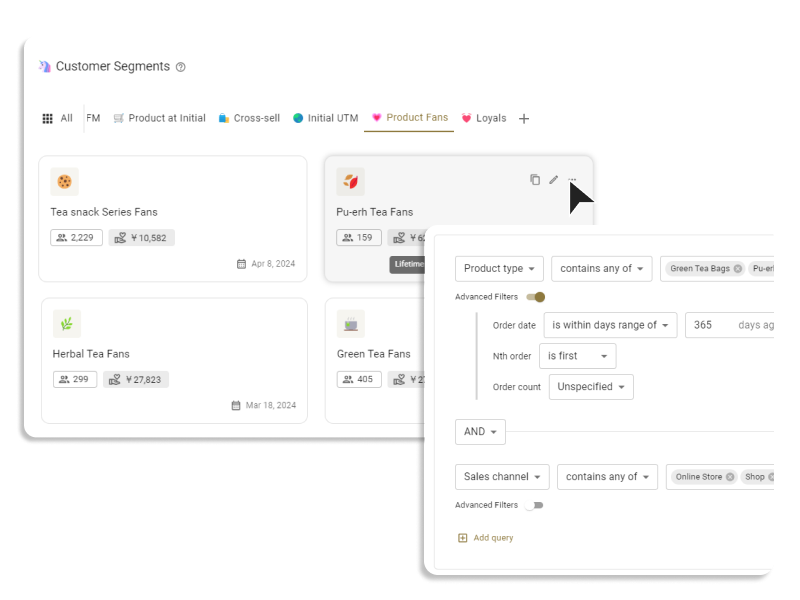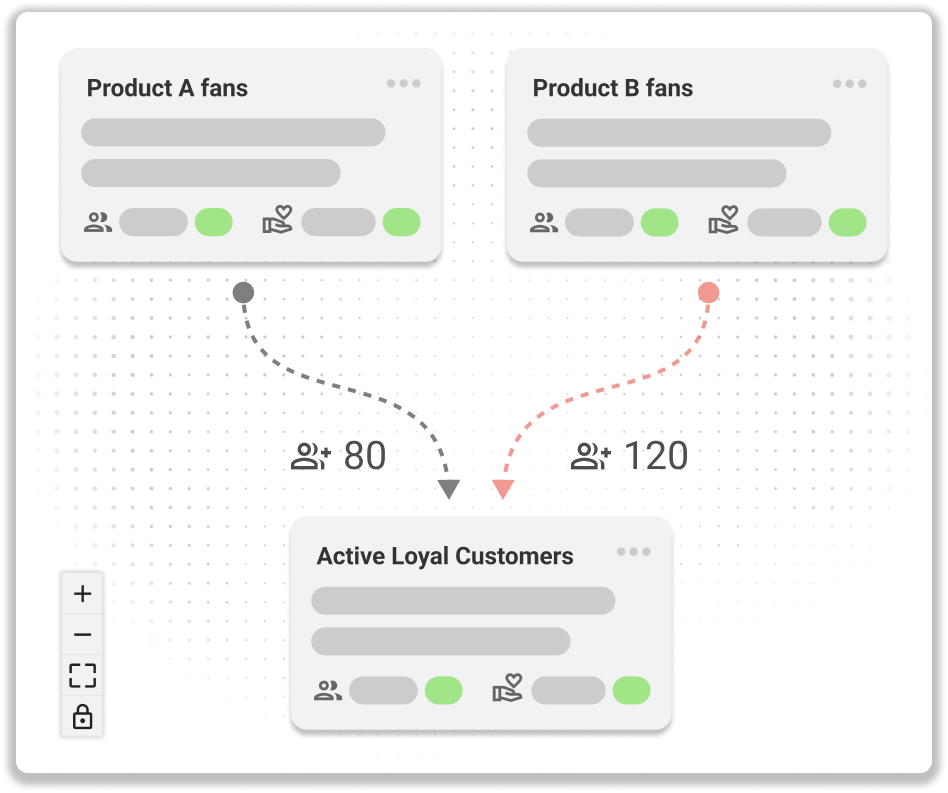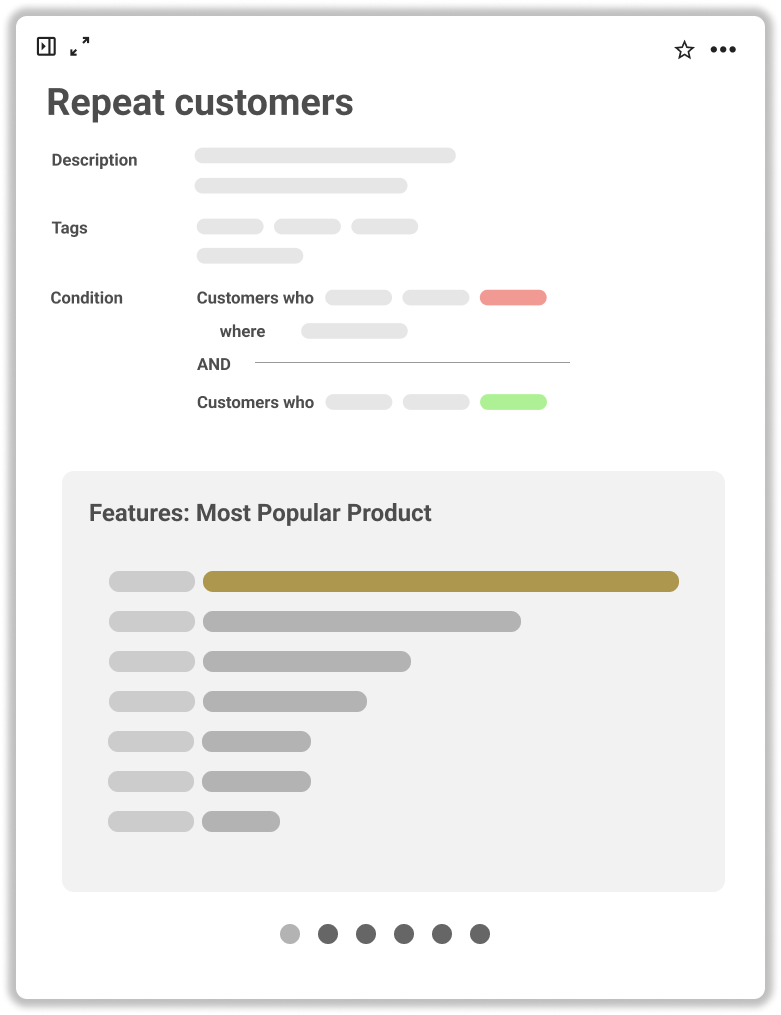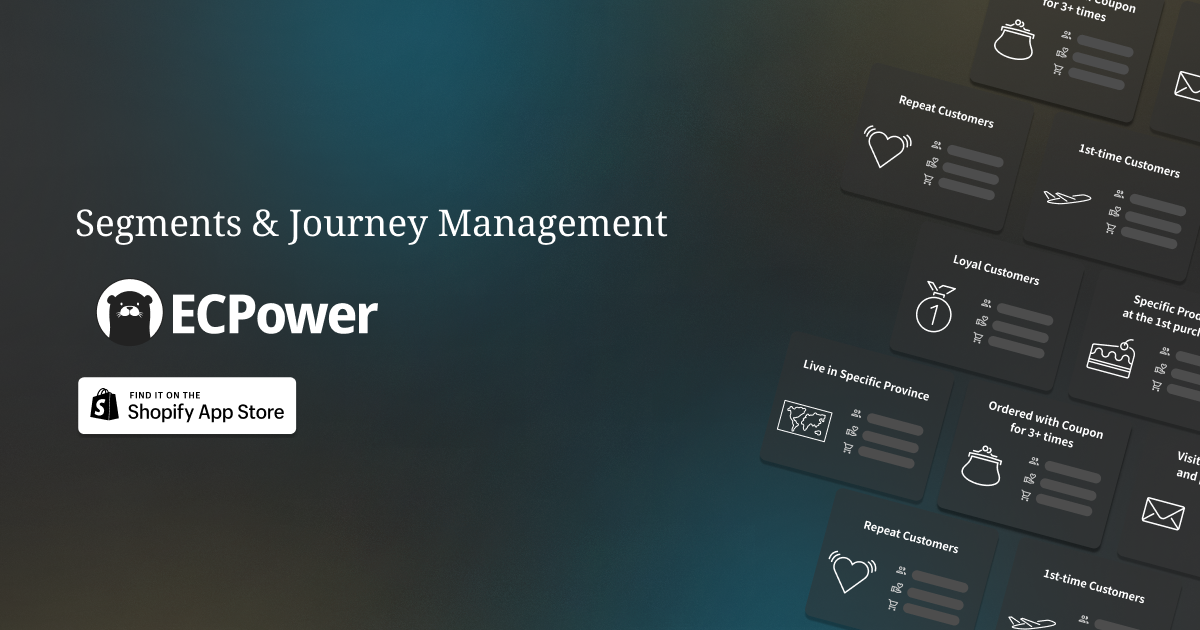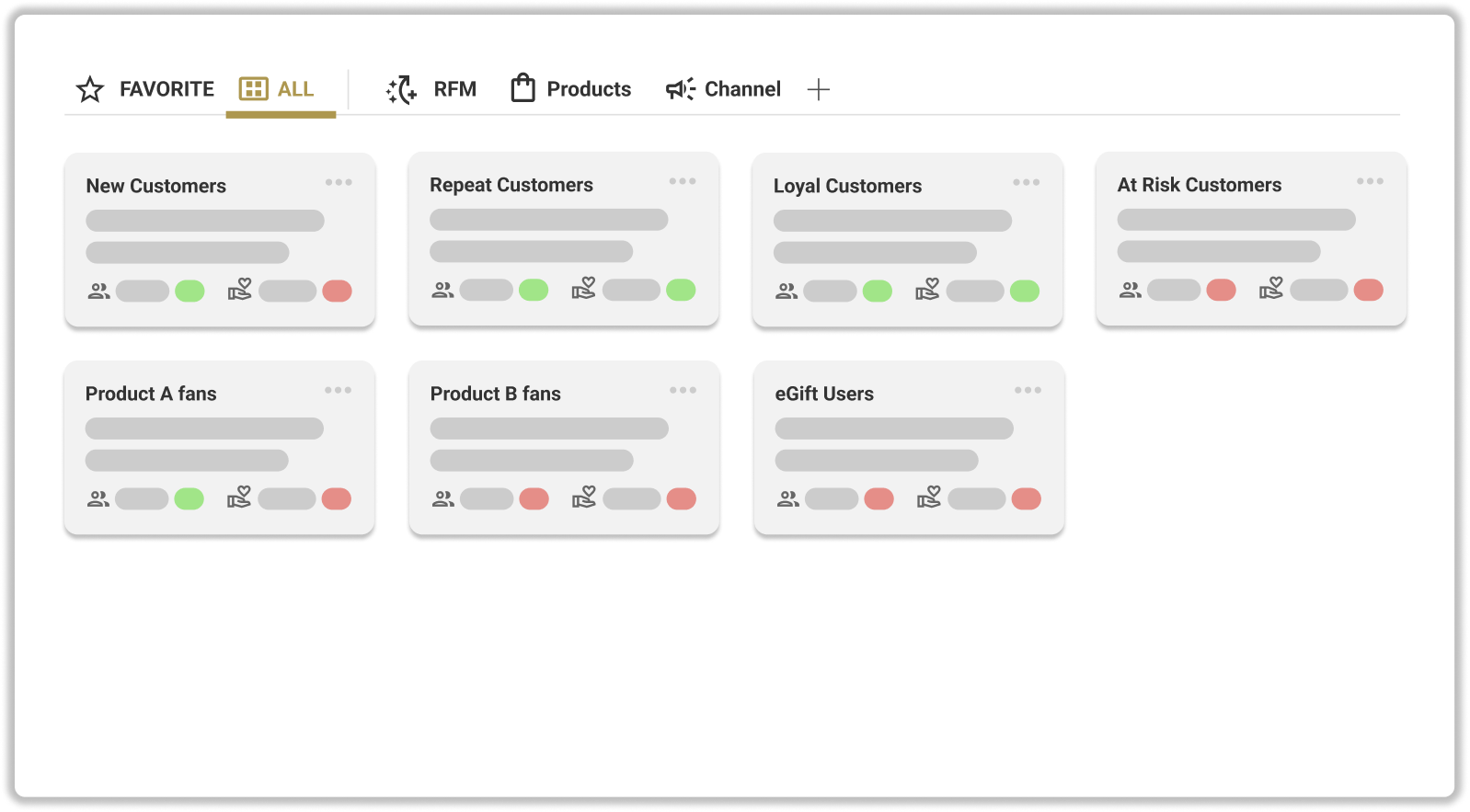RFM (Recency, Frequency, Monetary) analysis is a proven marketing tool that helps businesses understand their customer base in depth by segmenting shoppers according to how recently they made a purchase, how often they buy, and how much they spend. This blog explores how Shopify store owners can leverage the 'RFM Status Distributions' report to optimize marketing efforts and boost customer retention and sales.
What's RFM
RFM stands for Recency, Frequency, and Monetary Value:
- Recency: Measures the number of days since a customer's last order. Customers who have purchased recently are more likely to be receptive to new offers.
- Frequency: Counts how many times a customer has purchased within a specific timeframe. A higher frequency indicates greater customer engagement and loyalty.
- Monetary Value: Calculates the total amount spent by a customer. This reflects the customer's economic value to the business.
Detailed Insights from the "RFM Status Distributions" Report
Understanding the distribution of each RFM status is crucial for accurately setting thresholds in RFM analytics. This report offers transparent insights into these distributions, moving beyond generic, black-box threshold suggestions. By presenting a clear and detailed view of how Recency, Frequency, and Monetary values are spread across your customer base, you can make informed decisions to fine-tune your segmentation and tailor your marketing strategies more precisely.
⌛ Popular Recency (days since last order) range
This part of the report focuses on how recently customers have made purchases, sorted into deciles (excluding the top and bottom 5% to avoid data skew). This helps identify the most common recency windows, providing insights into when customers are most likely to repurchase.
🎲 Popular Frequency (purchase count) range
Frequency distribution is analyzed similarly, identifying the most common purchase frequencies among customers. This data helps pinpoint how often your customers are returning, which can guide decisions on loyalty programs and promotional offers.
💰 Popular Monetary (total order value) range
This section examines how much customers typically spend, divided into deciles to provide a clear view of spending patterns. Understanding these patterns helps tailor upsell strategies and customize offers to maximize revenue from high-spending segments.
Why 'RFM Status Distributions' Insights Matter
RFM analysis offers precise customer segmentation, crucial for crafting personalized marketing strategies. By knowing which customers are most engaged and valuable, businesses can target their efforts more effectively, improving ROI on marketing campaigns and fostering stronger customer relationships.
- Strategic Resource Allocation: With RFM analysis, businesses can identify which customer segments are the most profitable and which ones require more attention to improve their lifetime value. This enables companies to allocate their marketing resources more efficiently, focusing efforts and budget on the segments that are most likely to drive revenue and growth. For example, high-frequency, high-monetary customers can be targeted with exclusive offers and loyalty programs to maintain their interest and spending.
- Optimized Promotional Strategies: Understanding the RFM status of different customer segments enables businesses to craft promotions that are more likely to succeed. For example, customers with high recency but low frequency might be encouraged to make purchases more often with regular, small incentives or reminders of new product arrivals. Similarly, high-value customers might receive more premium, personalized offers to enhance their perception of brand value and increase their loyalty.
- Enhanced Customer Lifecycle Management: RFM analysis provides insights across the entire customer lifecycle. Businesses can use this data to fine-tune each phase of the customer journey—from acquisition through engagement to retention. By knowing where each customer falls within the RFM segments, businesses can tailor interactions that are appropriate to each stage of the lifecycle, enhancing overall customer experience and maximizing lifetime value.
Use Cases - Recommended Segments Filters
- Targeted Segment: Apply RFM insights to target customers based on their specific RFM status. For example, create special offers for customers with high monetary values but low recency to re-engage them.
- Segments Based on Purchased Products: Combine RFM data with product purchase history to identify which products appeal to your most valuable customers, allowing for targeted product recommendations.
- Segment Based on Acquisition Channels: Analyze how different marketing channels contribute to attracting high-value customers. Adjust your channel strategy based on which ones bring in customers with favorable RFM scores.
The 'RFM Status Distributions' report is a powerful tool for any Shopify store owner aiming to deepen customer engagement and increase sales. By understanding and acting on RFM insights, you can more effectively allocate marketing resources, tailor communications, and ultimately build a more profitable and customer-centric business. Harness these insights to elevate your store's performance and stand out in the competitive eCommerce landscape.


